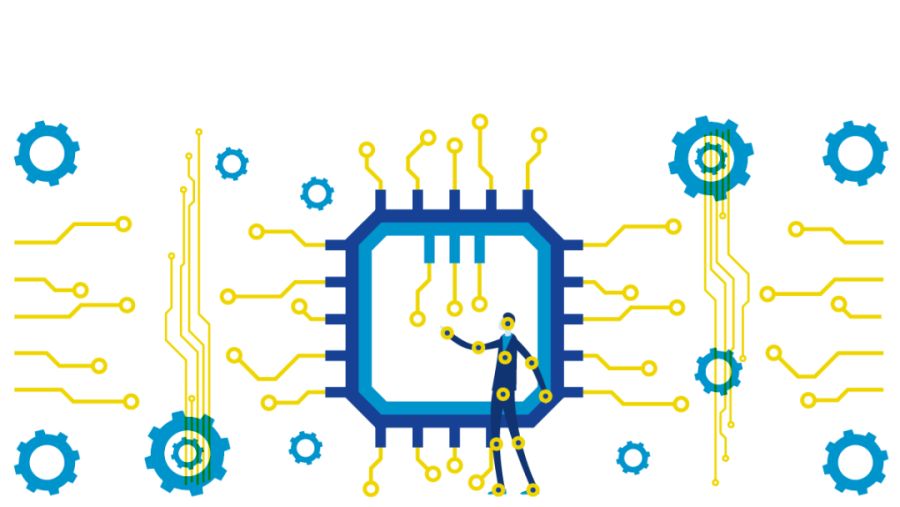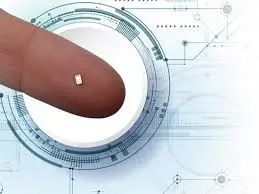Ubiquitous physical sensors
The monitoring of physical parameters such as temperature, wind speed, atmospheric pressure, inclination and force has been important to humans since ancient times. The first sensors or devices used to measure these parameters were cumbersome. Furthermore, they are also inaccurate because the user or observer is responsible for reading and interpreting the sensor signals. However, the data collected with these devices is useful for navigation and astronomy.
Today, our society is more industrialized, and we use and rely to some extent on countless complex devices, machines and instruments.The performance and functionality of these devices, machines and instruments are indirectly dependent on the various high-precision sensors installed inside them.Therefore, there is a growing need for more and more sensors. These sensors are used to monitor various parameters such as level, flow, temperature, pressure, magnetic field, acoustic signal, distance, proximity, tilt, rotation, touch, motion, light intensity, acceleration, color, etc.
Currently, even in the harshest or most challenging environments, sensors are used to monitor physical parameters such as forces and ultrasonic waves inside the human body, sound waves in the deep ocean, pressure in turbines and oil wells, and rotation in space and acceleration.
Sensors can provide data and information on a variety of physical parameters that are critical for controlling various industrial processes, or for medical applications, meteorology or scientific research.This is why these sensors have become ubiquitous.
Sensors provide useful data about their environment, which is critical to the performance and functionality of equipment and machines. They can also provide continuous information about the state or health of structures, materials, or devices embedded in them. Therefore, they are placed at multiple points to collect data on as many different physical parameters as possible. In this way, sensors enable materials, devices or structures to become smarter, more efficient or more functional and safer.

Diverse Applications of Physical Sensors
In most cases, sensors only provide data on a single parameter, which is what they are supposed to be, but in more recent applications, two or more sensors work together. For example, accelerometers and gyroscopes in drones provide more information to the aircraft itself, such as position, altitude, flight distance, etc. Accelerometers and gyroscopes in wearable devices or sports equipment work together to provide a variety of information such as the distance a person has moved, the number of impacts, the force and location of the impact. All of this information can help athletes improve their performance.
Currently, some critical infrastructure, vehicles, instrumentation, etc. are not possible without multiple physical sensors. These sensors are tasked with providing real-time data on a range of parameters, from temperature, acceleration, sound to a person's inclination or heart beat. Thanks to sensors, critical infrastructure such as pipes, roads, buildings, instruments, vehicles, etc. have "artificial nerves" or senses.
For instance,Modern medical instruments and surgical robots Both contain multiple sensors that can monitor not only medically relevant parameters, but also physical parameters such as force or pressure, providing haptic feedback.
Another example isself-driving car,
A large number of these parameters are constantly monitored to make it safer and cleaner. A third example includes sensors in smartphones and watches. Such sensors provide data as varied as a person's heart rate, battery status, screen orientation, proximity to an object or the intensity of ambient light.
The megatrend of making everything smarter, safer, or simpler, and adding more functionality to instruments, devices, gadgets, smartphones, appliances, etc., has increased the need to monitor more parameters in different environments. This in turn increases the types of sensors and the technology used to make them.

In general, electronic sensors are preferred in a variety of applications due to their small size, light weight, high reliability, and cost-effectiveness.
However, electronic sensors may not function properly, or may not be suitable or recommended for certain applications. In some cases, optical sensors are the only viable solution because they are insensitive to electromagnetic interference. For example, modern endoscopes include fiber optic force and acoustic sensors and monitor such parameters inside the human body. Fiber optics are also used to monitor strain, temperature and vibration at millions of points in critical infrastructure such as pipelines, power lines, perimeters and boundaries.
So the obvious question is: what are the grand challenges for physical sensors in the coming years?
The big challenge for future physical sensors
There is no easy answer to this question because the applications of sensors are diverse and many different types of sensors exist.
Let's start from a scientific point of view.
The cutting-edge advances in physical sensors in terms of sensitivity, resolution, measurement range, precision, accuracy, and more are expanding almost every day. There is no doubt that nano and quantum technologies will help push the limits of physics and other sensors. By using single photons or entangled photons or other quantum resources, the sensitivity of optical and electronic sensors can be increased above the so-called emission-to-noise limit.
Therefore, in the near future, it will be possible to develop sensors capable of detecting parameters with a precision and resolution that cannot be achieved by today's sensors. The gravitational wave detector VIRGO demonstrates the enhancement of the sensitivity of the squeezed state of light. Similar concepts can be used for the development of other high-sensitivity quantum sensors. New nanomaterials or effects emerging at the nanoscale can also be used to increase the sensitivity of sensors, or to develop entirely new ultraminiature sensors.
From a technical point of view, the challenge for sensors is to drastically reduce their cost, size or energy consumption.
For example, fiber optic sensors are much more expensive than electronic sensors. Therefore, in order to reduce the cost of fiber-optic sensors, it is crucial to investigate new ways to design such sensors, their components, or how they can be interrogated.
On the other hand, wearable devices have limited range of use due to short battery charging times. Therefore, it would be interesting to investigate new mechanisms for powering sensors, for example, with body heat or motion, or with parameters to be monitored. In autonomous vehicles, sensors must be more bulky and less expensive; in addition, they must be highly reliable and accurate, and must respond quickly. Sensors with these attributes will help develop cleaner, more reliable, and more affordable self-driving cars.
The processing and interpretation of the data and signals generated by sensors are also important challenges, and this is an interesting area of research in sensor technology.Currently, sensors are used to monitor multiple physical parameters in real time, and this situation will not change much in the future. In many industrial, scientific, and other applications, sensors can provide vast amounts of data that must be collected, stored, processed, and interpreted at high speeds to provide information in real-time. In these contexts, concepts and methods used in artificial intelligence and deep learning, and techniques used in big data (are and are increasingly being considered.
We are now living in the age of the Internet of Things (IoT), and the greatest challenge for physical (and any other) sensors will be, at literally every instant, providing data about the parameters they are supposed to monitor, and communicating the sensory data to other devices and learn from the data.So over the next few years, we will see sensors play a role beyond sensing.

The recent global pandemic caused by the coronavirus presents significant challenges for physical sensors to address urgent societal needs.
For example, body temperature sensors can quickly identify people with fever at airports and bus/train stations. In this case, the challenge is to measure body temperature quickly and with high accuracy without touching people, preferably several people at the same time. Flow and pressure sensors incorporated into breathing aids are also critical to helping infected people breathe more easily; thus, such sensors could help save lives in intensive care units. Smart doors and faucets, on the other hand, help avoid the spread of the virus because proximity sensors installed in them can open such doors or faucets without touching them.
In the near future, we will see how several sensors installed in smartphones can work together to help fight the spread of the coronavirus. Smartphones will provide us with a sophisticated system of proximity detection, alerting us to possible exposure to infected people.
Physical sensors and other sensors will continue to provide artificial sensing and more functionality for all kinds of things, making them smarter, safer, cleaner, and more user-friendly.Physical sensors are also clearly important and necessary during the recent global pandemic, and can even help save lives.
Author: Dublin City University, Ireland Dermot Diamond
Compilation: Xiaoxiao
—— END ——





 13602604941
13602604941
